Throughout her tenure at Hermès, Nadège Vanhee-Cybulski has sought to define the Hermès woman as one who, albeit being quintessentially French, is ultimately international—confident, resilient, and entirely autonomous.
Her 46-look collection for Hermès’ autumn/winter 2021 season was a deftly articulate expression of this woman, presented through a kinetic triptych of choreographies happening simultaneously in 3 different cities around the world, shown digitally in sequence of one another. This was a decision born out of a desire to connect and remain connected with people and other art forms across borders, and a way to translate key ideas about the Hermès autumn/winter 2021 ready-to-wear collection.
Movement—specifically the need to move without feeling restrained or constrained, and the necessity to constantly move forward, especially during tough times—was a central theme. The collection in general was marked by a characteristically understated, timeless elegance and sensual ease—a balancing act between sharp tailoring, while maintaining a softer, more languid silhouette; and expressing modernity, while preserving the brand’s signatures and heritage.
Here are Vogue Singapore’s 8 key takeaways from the collection:
1. Tailored denim
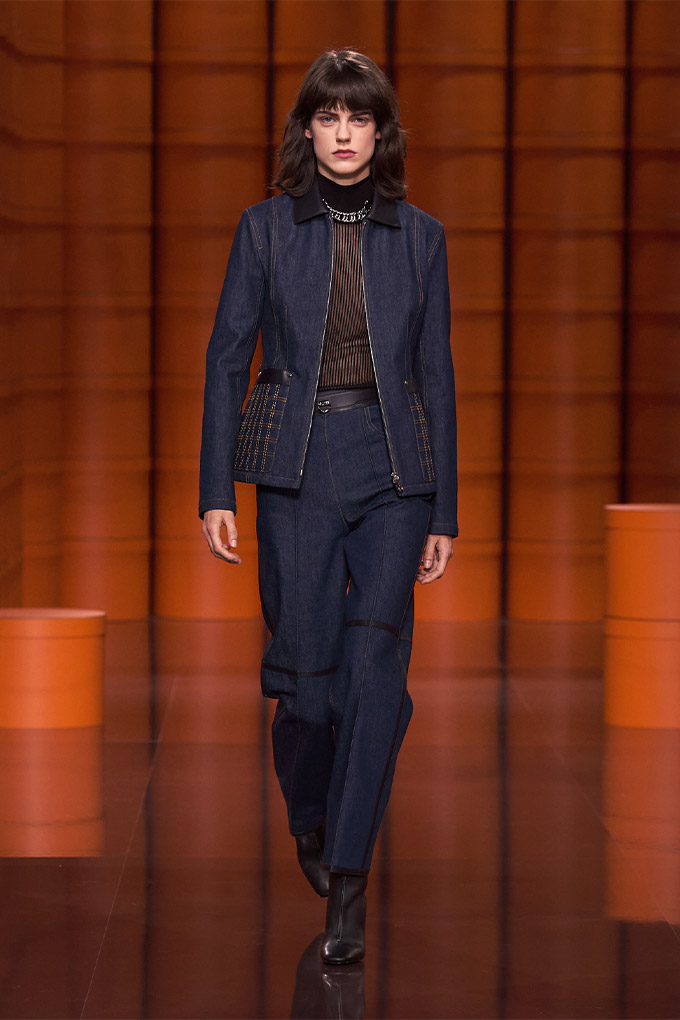
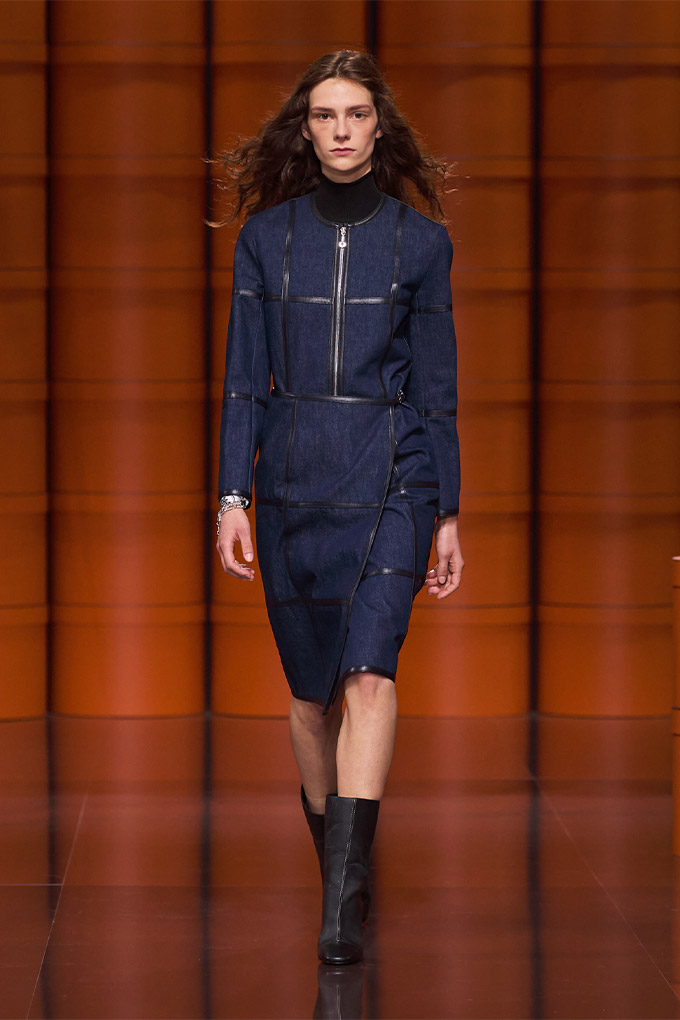
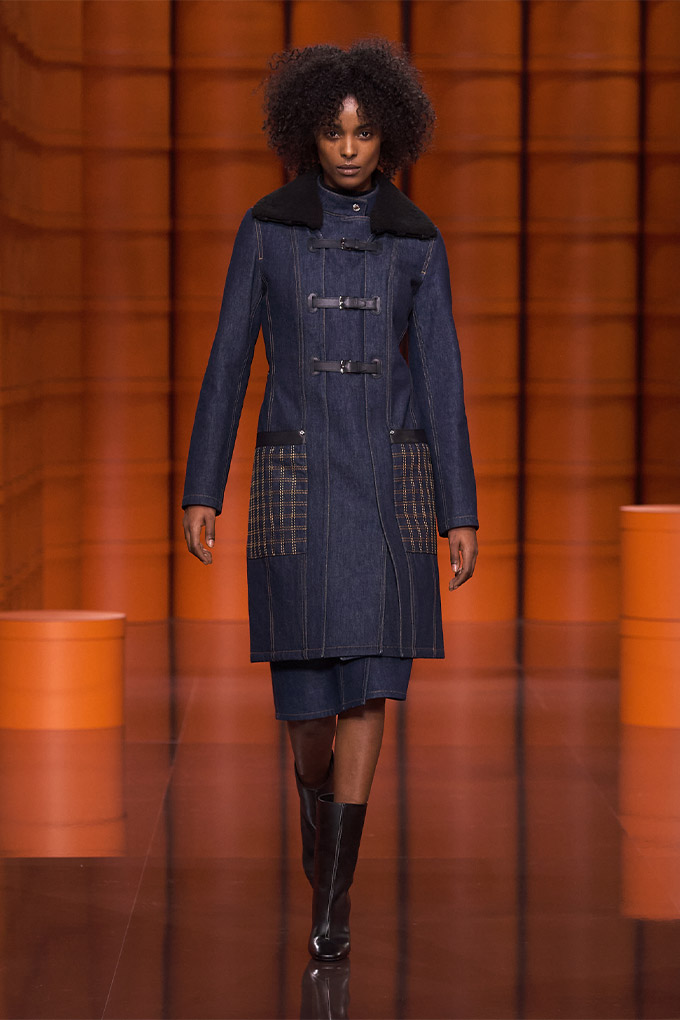
Vanhee-Cybulski’s collection opened with a number of exceptionally tailored denim looks, all fit fairly close to the body without appearing tight or restrictive in any way.
2. Fringe



A fringe trim was featured on numerous outerwear pieces and hemlines, emphasising the idea of movement.
3. Clothing as protection

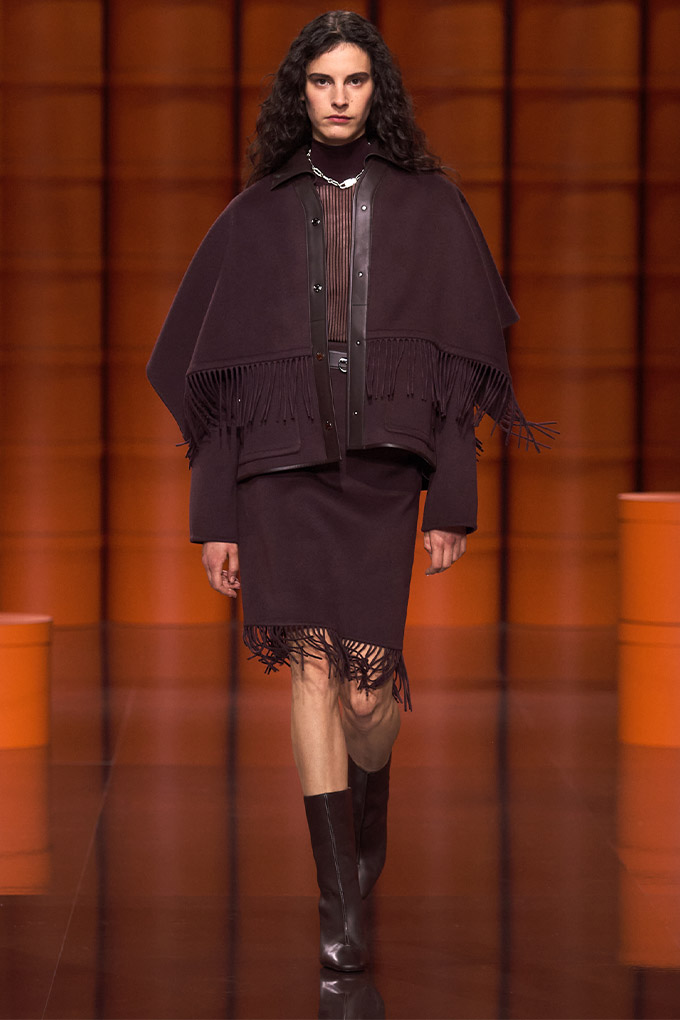

Vanhee-Cybulski chose to focus on using materials that would evoke shelter and warmth, incorporating scarves into outerwear options to lend a cocooning, draped effect to suggest protection while still maintaining a sense of ease.
4. Pleats

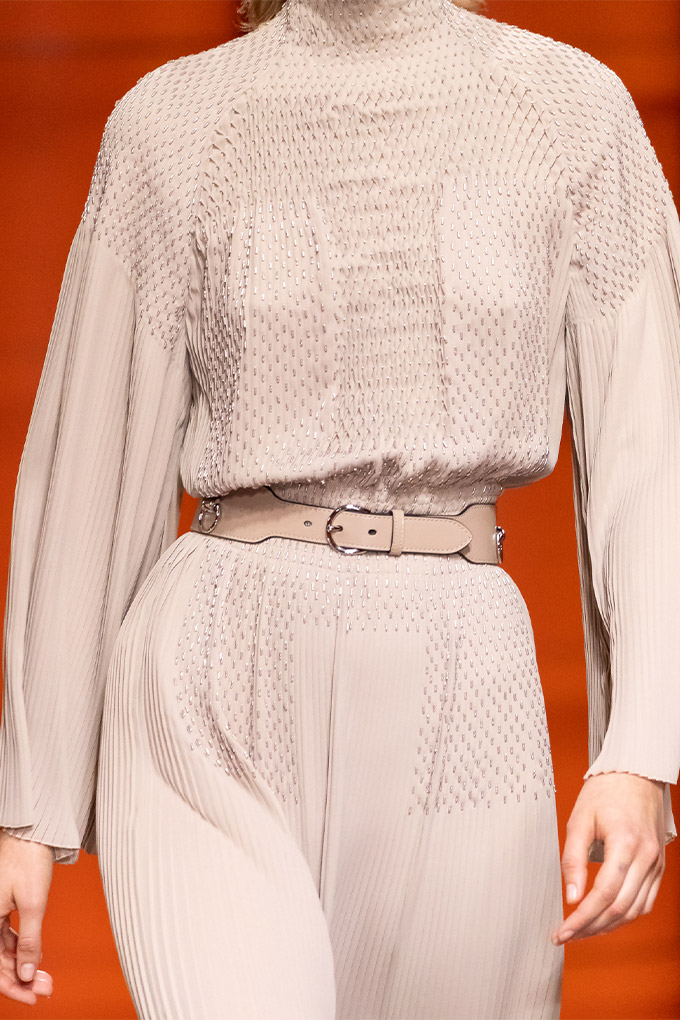

Pleats featured heavily throughout the collection, especially on airy, romantic dresses and skirts, allowing the clothes to expand in motion, and freeing the garment and the body.
5. Exceptional craftsmanship


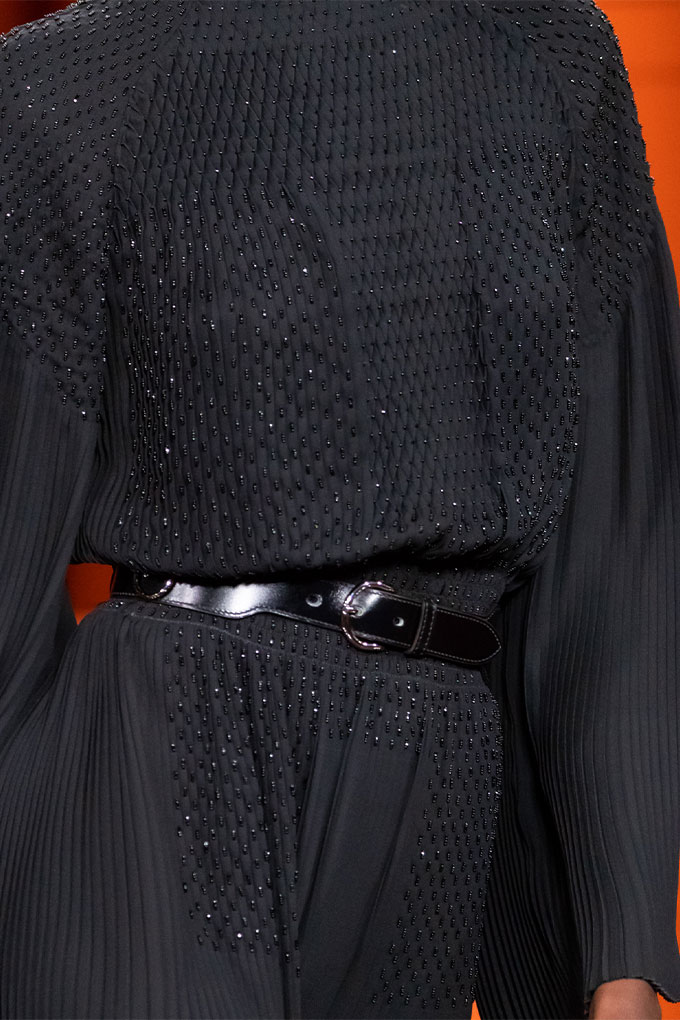
Elements of exceptional craft and quality that have long been associated with the house were incorporated into the collection, including in the form of hand-stitched and embroidered beadwork.
6. Equestrian references



Leather belts that would not have looked out of place on the equestrian show circuit and a tattersall equestrian check were woven seamlessly into the collection, giving a nod to the brand’s history with saddlery and equestrian gear.
7. It-accessories


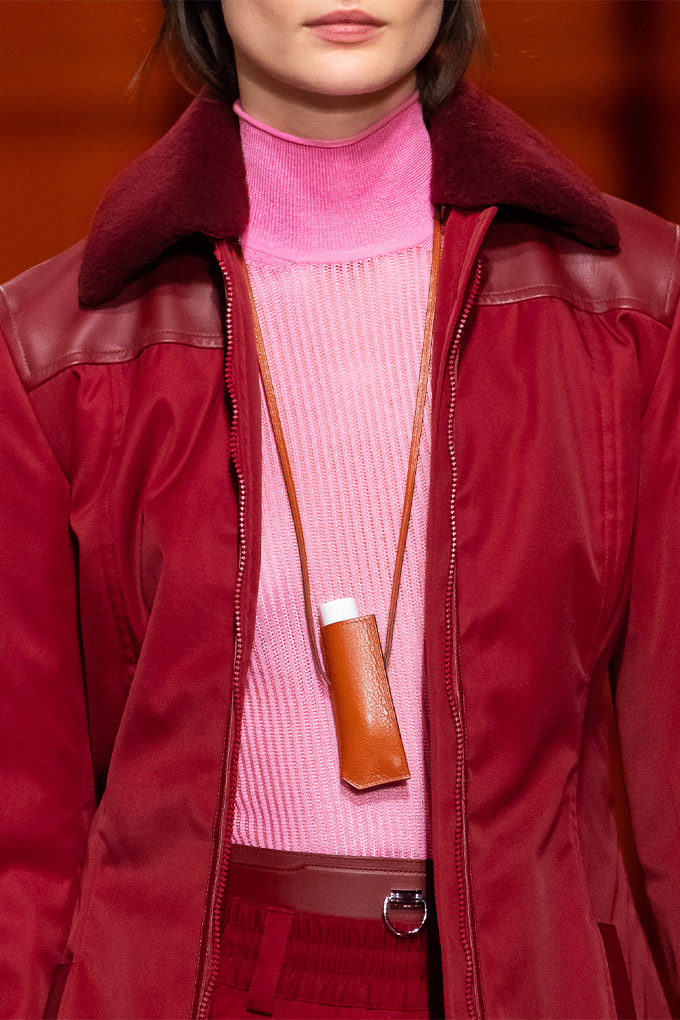
The Hermès autumn/winter 2021 collection also debuted a number of key, new and re-interpreted accessories for Hermès, specifically, the 3-in-1 Birkin; the Hermèsway, a bag of sorts with compartments meant to house one’s modern essentials (a phone, cards, AirPods, and a lipstick); and the Kiss Holder, a leather holder specifically made for a tube of Rouge Hermès, to be worn around one’s neck.
8. Female strength as told by women
The triptych opened with a dance in New York by Madeline Hollander, followed by a socially distanced runway show in Paris, and concluded with a second dance by Gu Jiani in Shanghai.
Vanhee-Cybulski invited Hollander and Gu to interpret her ready-to-wear collection to tell stories about women and the relationship between clothing, movement and attitude. Hollander’s piece was inspired by the movement of everyday life in New York and the pulse of the city. Vanhee-Cybulski’s collection was about the Hermès woman—an expression of the French woman and, more broadly, about women having complete autonomy over their lives. Gu’s choreography was an athletic display informed by elements of traditional Chinese Bagua mixed with western ballroom dancing, of women in constant, almost turbulent motion, supporting one another with strength and sensuality.
As local as these 3 choreographies felt, all of them collectively spoke of a much more universal story—of the strength, resilience and beauty of female power, with a sensitivity that could only be articulated by a woman.





